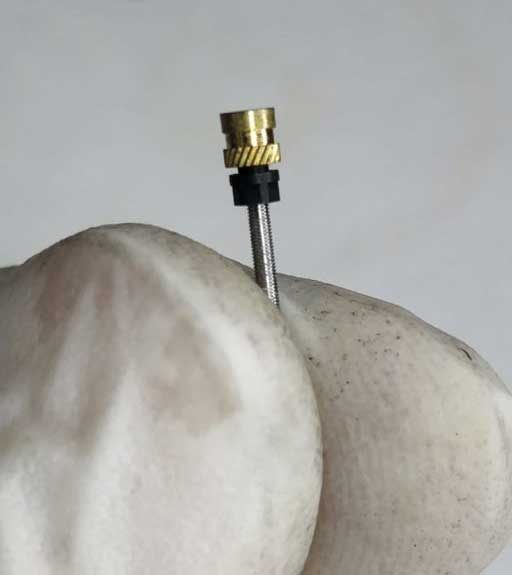Mar 9, 2022
Fabrica Precision Micro AM at AntiShock

Finer Threads – Micro 3D Printing comes to the aid of medical device development
by Gil Lavi
3D evaluate
AntiShock, Haifa, Israel, is an innovative medical device startup that develops a disposable, non-invasive, continuous monitoring system that measures patients’ systemic fluid responsiveness, preventing intravenous (IV) fluid overload. Fluid overload is a common condition among intensive care unit (ICU) patients that not only has negative financial and clinical implications, but more importantly can cause organ failure, and — in severe cases — death.
Towards this challenge, AntiShock is developing a breakthrough electro-optical sensing medical device based on a tiny sensor. This device is built out of several small mechanical moving components that have to be strong and accurate. In order to validate its product and produce a working prototype, AntiShock had to locate and use advanced and accurate manufacturing technologies.
The two leading manufacturing technologies that were chosen were CNC and the stereolithography (SLA) 3D printing process that gave AntiShock the ability to create the first product mock-up. However, when moving to a more advanced stage in their R&D, the company confronted a challenging task — it needed to produce a highly detailed component about 1-mm in diameter. SLA 3D printing could not provide the required levels of details and accuracy, and while CNC could, it was expensive. R&D came to a hold, and new design solution was required.
A NEW SOLUTION
The challenge went beyond printing the component; there was also a need to print a small-size thread with a
non-standard pitch and fit a small screw on top of it, The components had to fit each other perfectly and the 3D printed component had to be strong enough to sustain mechanical loads.
After reviewing the part’s size, geometry, thickness, and estimating the mechanical loads it had to withstand, the firm Nanofabrica (since acquired by Nano Dimension and called simply Fabrica) accepted the challenge and decided to print the part.
After delivering a CAD file, it took only a few days before the AntiShock R&D team had the 3D printed part in their hands! Excited and intrigued, they examined the part under a microscope to evaluate the levels of accuracy and to verify that the required details had been produced. The results were beyond their expectations. The 3D printed part had passed their first qualification step. But would it fit the small metal screw? After carefully assembling the parts
it was found to be a perfect fit.
MICRO ADDITIVE IN R&D
After summarizing all the data and comparing the use of micro 3D printing to CNC and SLA, AntiShock came to the following conclusions that made clear the advantages of micro 3D printing in their R&D process:
ACCURACY
First of all, Fabrica 2.0 had the ability to provide the challenging levels of detail and accuracy required. 3D printing such a small part is not simple and definitely requires the use of a non-standard process.
GEOMETRY
Micro 3D printing promotes design freedom, and so facilitated the production of this part (and future ones), without many of the limitations associated with more conventional production processes.
DELIVERY TIME
The delivery time for five 3D printed parts was one day. Using CNC, five parts would have taken between 3-4 days.
COSTS
Producing a small dimension/ highly precise part via the CNC process would cost several hundreds of dollars, while using micro 3D printing it cost 80% less.
Additively Manufactured Applications in Medical Research
Tight Fit: The three-part assembly including a 1 mm diameter screw, fits together perfectly

FABRICA PRECISION MICRO-AM MATERIALS DELIVER HIGHLY FUNCTIONAL MICRO PARTS
Fabrica MaterialsStay Updated
Be informed of the future of additive manufacturing &
3D printed electronics